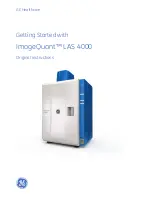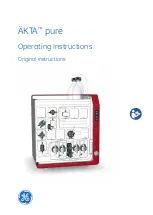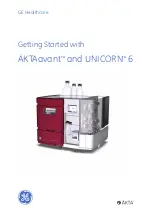
WT.025.000.001.UA.IM.0614
CHLORINE HANDLING MANUAL
PAGE 8
EVOQUA
W3T98244
WARNING: NEVER LIFT CYLINDERS BY THE VALVE PRO-
TECTING HOOD. THE HOOD MAY SEPARATE FROM THE
CYLINDER, CAUSING THE CYLINDER TO FALL.
Never lift cylinders by sling or magnetic devices. If lifting
is necessary, use a specially designed cradle. Contact your
chlorine supplier for recommendations or information.
When moving ton containers, due consideration must be
given to the fact that the liquid in the container represents
a live load in addition to the dead load of the container and
the liquid. The most accepted way of moving ton containers
is by overhead conveyor and lifting beam (see Figure 11).
Rails or roller conveyors have also been used. Fork lift trucks,
in addition to having adequate capacity, must have the con-
tainers restrained and be sufficiently stable to prevent tipping.
3.7 USING CONTAINERS
If containers have been stored in an area other than that in
which they will be used, they should be allowed to stabilize at
the new temperature before being used. Containers should
always be used in the order in which they are received to avoid
unnecessarily long storage and possible difficulty with valves
that have not been opened or closed for too long a period.
WARNING: CYLINDERS ARE NORMALLY USED IN AN
UPRIGHT POSITION FOR GAS WITHDRAWAL. TO AVOID
SEVERE PERSONAL INJURY OR EQUIPMENT DAMAGE,
SUPPLY CYLINDERS MUST BE SECURED IN SUCH A
MANNER (E.G., CHAIN) AS TO PREVENT THEIR BEING
KNOCKED OVER. TON CONTAINERS MUST BE USED IN
A HORIZONTAL POSITION WITH THE TWO VALVES IN A
VERTICAL LINE. TON CONTAINERS MUST BE SECURED
IN SUCH A MANNER (E.G., CHOCKS) TO PREVENT THEIR
ROLLING OUT OF PLACE.
When withdrawing gas from a ton container, connection is
made to the upper valve (see Figure 6). Liquid withdrawal is
accomplished by connecting to the lower valve.
It is recommended that special 3/8-inch square box wrenches,
rather than adjustable wrenches, be used for opening cylinder
and ton container valves. Length of the wrench should not
exceed eight inches. It is good practice to leave the wrench
in place so the valve can be closed quickly in case of an
emergency. Maximum discharge can be accomplished with
one full turn of the valve. Excessive force must not be used
in opening valves. Never strike the wrench with anything
other than the heel of the hand. Loosening the packing nut
a maximum of 1/2 turn is acceptable, provided the packing
nut is tightened after the valve is operated. Contact your
chlorine supplier if these procedures do not permit opera-
tion of the valve.
Angle valves on tank cars must be opened fully to aid the
operation of the excess flow valve.
Always test for leaks before putting new containers in service.
The system can be pressurized by opening the container valve
and then closing it. The valve can be opened again after it is
determined that there are no leaks.
WARNING: ALWAYS WEAR PROTECTIVE CLOTHING
WHEN CHECKING FOR LEAKS. REFER TO “PERSONNEL
SAFETY” FOR INFORMATION ON HEALTH HAZARDS AND
SAFETY PRECAUTIONS.
It is not unusual during humid conditions for condensation
to collect on the outside of the container. A buildup of frost
on the container indicates that withdrawal rates are too high
to permit the surrounding air to supply the heat necessary
to evaporate the liquid chlorine. Increasing the circulation
of room temperature air past the container may correct the
condition. Do not apply direct heat to the container in any
way. It may be necessary to shut off the container valve and
permit it to warm up again before putting it back in service.
After emptying the container, the valve must be closed be-
fore disconnecting to prevent the entry of moisture. After
disconnecting, the valve cap and the valve protecting cap
or hood must be replaced before the container is moved.
Empty containers should be segregated from full containers
and should be tagged.
Tank cars are unloaded by means of one of the liquid valves.
One of the gas valves can be connected to the system to
permit pressure testing with gaseous chlorine rather than
liquid. The flexible connection used for tank car unloading
must be designed for and installed in such a manner to allow
for the significant increase in height as the car unloads. Since
Figure 11 – Ton Container Handling
Содержание V10K
Страница 1: ...V10K V NOTCH CHLORINATOR BOOK NO WT 025 100 001 UA IM 0614...
Страница 2: ...V10K V NOTCH CHLORINATOR BOOK NO WT 025 100 001 UA IM 0614 W3T109612...
Страница 12: ......
Страница 23: ......
Страница 45: ...WT 025 100 001 UA IM 0614 V10K V NOTCH CHLORINATOR 32 EVOQUA W3T109612...
Страница 46: ......
Страница 61: ......
Страница 90: ......
Страница 131: ......
Страница 133: ......
Страница 134: ...CHLORINE HANDLING MANUAL Cl2 BOOK NO WT 025 000 001 UA IM 0614 W3T98244...








































